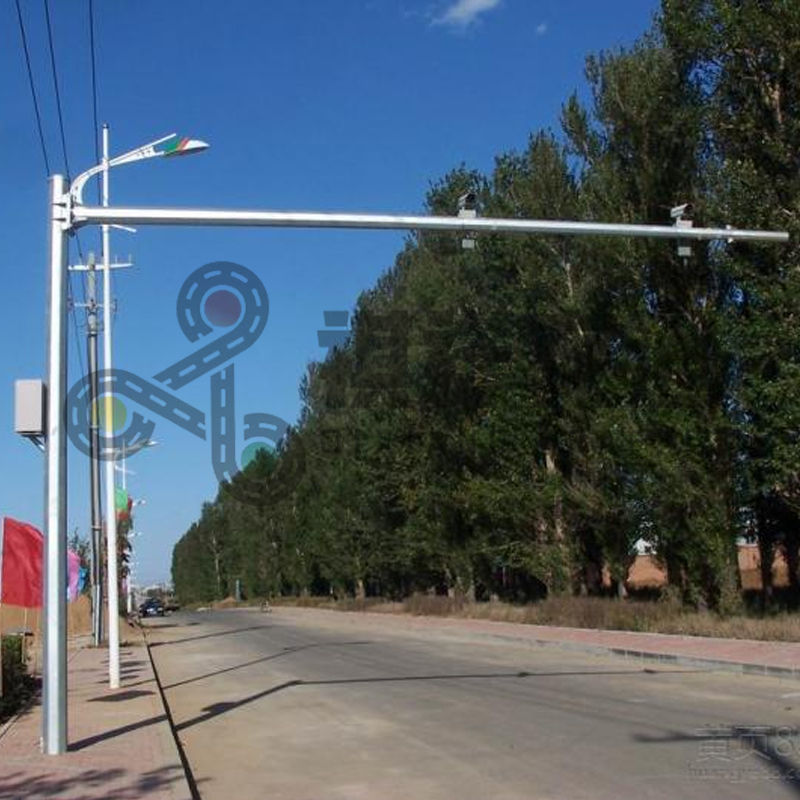Traffic signal pole arms are an important part of traffic management systems, providing a platform for installing traffic signals and ensuring they are visible to drivers and pedestrians. The shape design of the traffic signal pole arm is crucial to ensure the effective performance of the traffic signal and the safety of road users. In this article we will explore the factors to consider when designing the shape of a traffic signal pole arm and the principles of effective design.
There are several key factors to consider when designing the shape of a traffic signal pole arm. These factors include visibility, structural integrity, aesthetics, and functionality. The shape of the lever arm plays an important role in determining the visibility of traffic signals to all road users. It should be designed to ensure unobstructed visibility from all angles and distances, allowing drivers and pedestrians to clearly see the signal and react accordingly.
Structural integrity is another key consideration in traffic signal pole arm design. The lever arm should be shaped to withstand environmental factors such as wind, rain, snow, and the potential impact of vehicles or other objects. It is necessary to ensure that the design of the lever arm provides sufficient strength and stability to support the weight of the traffic signal and withstand external forces without compromising safety.
Aesthetics also play a role in the design of traffic signal pole arms, particularly in urban and built environments. The shape of the pole arms should complement the surrounding environment and infrastructure, helping to enhance the overall visual appeal of the area. Well-designed pole arms can enhance the aesthetics of the streetscape while fulfilling their functional purpose.
Functionality is perhaps the most important aspect of traffic signal pole arm design. Lever arms should be shaped to facilitate efficient installation and maintenance of traffic signals. It should provide easy access to the signal for maintenance and repair and provide a safe and stable installation platform for the signal.
In order to effectively design the shape of a traffic signal pole arm, the following principles must be considered:
1. Visibility: The shape of the lever arm should be designed to maximize the visibility of the traffic signal from all relevant viewpoints, including those of drivers, pedestrians, and cyclists. This may involve considering the angle and height of the pole arm to ensure that the view is unobstructed.
2. Wind Resistance: The shape of the boom arm should be aerodynamically designed to minimize wind resistance and reduce the possibility of swaying or oscillating in windy conditions. This is vital to maintaining traffic signal stability and ensuring the safety of road users.
3. Material selection: The choice of lever arm material is critical in determining its shape and structural integrity. Materials should be selected for their strength, durability, and corrosion resistance, taking into account environmental conditions and potential influencing factors.
4. Ergonomics: The shape design of the lever arm should consider the ergonomics of installation and maintenance. It should provide technicians and maintenance personnel with easy access to traffic signals, allowing for efficient and safe signal service.
5. Aesthetic integration: The shape of the pole arm should blend harmoniously with the surrounding environment, taking into account architectural and urban design considerations. It should contribute to the visual coherence and attractiveness of the streetscape while fulfilling its functional role.
In the process of designing the shape of a traffic signal pole arm, a variety of design tools and techniques can be used to optimize the shape and performance of the arm. Computer-aided design (CAD) software can create accurate 3D models and simulations, allowing designers to visualize and analyze different shapes and configurations of lever arms. Finite element analysis (FEA) can be used to evaluate the structural integrity and performance of the lever arm under different loading conditions, helping to refine the design for optimal strength and stability.
In addition, prototyping and physical testing can be performed to verify the design and performance of the pole arm shape. Physical prototypes can be manufactured to evaluate actual installation, maintenance, and structural behavior, providing valuable insights into refining the design prior to full-scale production and implementation.
In summary, the design of a traffic signal pole arm shape is a multifaceted process that requires careful consideration of visibility, structural integrity, aesthetics, and functionality. By adhering to effective design principles and utilizing advanced design tools and techniques, the design of traffic signal pole arms can optimize their performance and safety while improving the visual quality of the urban environment. Well-designed arms not only ensure the efficient operation of traffic signals but also contribute to the overall safety and aesthetics of transportation infrastructure.
If you are interested in traffic signal poles, welcome to contact Qixiang to read more.
Post time: Apr-12-2024







